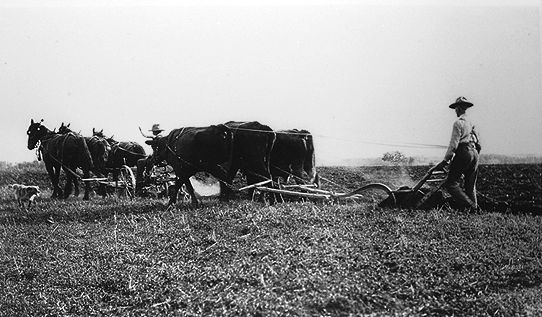Article
Pondweed
Pondweed is a common name for members of the family Potamogetonaceae [Gk potamos, "river"], which consists of the genus Potamogeton.

Enter your search term
Signing up enhances your TCE experience with the ability to save items to your personal reading list, and access the interactive map.
Create AccountArticle
Pondweed is a common name for members of the family Potamogetonaceae [Gk potamos, "river"], which consists of the genus Potamogeton.
"https://www.thecanadianencyclopedia.ca/images/tce_placeholder.jpg?v=e9dca980c9bdb3aa11e832e7ea94f5d9" // resources/views/front/categories/view.blade.phphttps://www.thecanadianencyclopedia.ca/images/tce_placeholder.jpg?v=e9dca980c9bdb3aa11e832e7ea94f5d9

Article
The poplar is a short-lived, deciduous, hardwood tree of genus Populus of the willow family, widely distributed in the northern temperate zone.
"https://d3d0lqu00lnqvz.cloudfront.net/media/media/62bf6280-e044-4789-abc5-84a773ec839d.jpg" // resources/views/front/categories/view.blade.phphttps://d3d0lqu00lnqvz.cloudfront.net/media/media/62bf6280-e044-4789-abc5-84a773ec839d.jpg

Article
Of the world's 23 species, only the North American porcupine (Erethizon dorsatum) occurs in Canada, throughout mainland forests and thickets.
"https://d3d0lqu00lnqvz.cloudfront.net/media/media/da303a47-692f-4260-89fe-f673d4ec5385.jpg" // resources/views/front/categories/view.blade.phphttps://d3d0lqu00lnqvz.cloudfront.net/media/media/da303a47-692f-4260-89fe-f673d4ec5385.jpg

Article
Potash is an alkaline potassium compound most commonly used in fertilizers. It refers to a variety of salts produced through mining of minerals and chemical manufacturing. Canada is the world's largest potash producer and exporter.
"https://d3d0lqu00lnqvz.cloudfront.net/media/media/cd668309-705d-44b0-a404-7a6c5242db9b.jpg" // resources/views/front/categories/view.blade.phphttps://d3d0lqu00lnqvz.cloudfront.net/media/media/cd668309-705d-44b0-a404-7a6c5242db9b.jpg

Article
The potato (Solanum tuberosum) is a herbaceous annual of the nightshade family, which produces tubers at the end of underground branches called stolons.
"https://d3d0lqu00lnqvz.cloudfront.net/media/media/7b83d57e-9794-41ff-99cc-34ba45f21bba.jpg" // resources/views/front/categories/view.blade.phphttps://d3d0lqu00lnqvz.cloudfront.net/media/media/7b83d57e-9794-41ff-99cc-34ba45f21bba.jpg

Article
Potato wart disease, also called potato canker, is a fungal disease of potato sprouts, eyes and stolons. The disease is caused by the soil-borne fungus, Synchytrium endobioticum. Potato wart disease poses no danger to human health or food safety, but it can impact local economies as the disease can reduce yield and effect economic regulations, such as potato exports. (See also Agricultural Economics.)
"https://www.thecanadianencyclopedia.ca/images/tce_placeholder.jpg?v=e9dca980c9bdb3aa11e832e7ea94f5d9" // resources/views/front/categories/view.blade.phphttps://www.thecanadianencyclopedia.ca/images/tce_placeholder.jpg?v=e9dca980c9bdb3aa11e832e7ea94f5d9

"https://www.thecanadianencyclopedia.ca/images/tce_placeholder.jpg?v=e9dca980c9bdb3aa11e832e7ea94f5d9" // resources/views/front/categories/view.blade.phphttps://www.thecanadianencyclopedia.ca/images/tce_placeholder.jpg?v=e9dca980c9bdb3aa11e832e7ea94f5d9

Article
The prairie dog is a highly gregarious, diurnal, terrestrial ground squirrel that lives in colonies or "towns."
"https://d3d0lqu00lnqvz.cloudfront.net/media/media/39e55559-6a69-49c6-834a-d2eb438d0ea7.jpg" // resources/views/front/categories/view.blade.phphttps://d3d0lqu00lnqvz.cloudfront.net/media/media/39e55559-6a69-49c6-834a-d2eb438d0ea7.jpg

Article
The Prairie Farm Rehabilitation Administration (PFRA) was a branch of Agriculture and Agri-Food Canada with a focus on Western Canada. It was headquartered in Regina, Saskatchewan. The PFRA also had 22 district offices throughout the Prairie provinces. The agency began in response to the drought crisis of the 1930s in the Prairies. However, for nearly eight decades, it continued to help farmers conserve soil, prevent erosion, develop water resources and manage pasture land.
"https://d3d0lqu00lnqvz.cloudfront.net/media/media/b4c10927-debc-4233-8c47-41315da62b2d.jpg" // resources/views/front/categories/view.blade.phphttps://d3d0lqu00lnqvz.cloudfront.net/media/media/b4c10927-debc-4233-8c47-41315da62b2d.jpg

Article
The Canadian Prairies were peopled in six great waves of migration, spanning from prehistory to the present. The migration from Asia, about 13,300 years ago, produced an Indigenous population of 20,000 to 50,000 by about 1640. Between 1640 and 1840, several thousand European and Canadian fur traders arrived, followed by several hundred British immigrants. They created dozens of small outposts and a settlement in the Red River Colony, where the Métis became the largest part of the population. The third wave, from the 1840s to the 1890s, consisted mainly but not solely of Canadians of British heritage. The fourth and by far the largest wave was drawn from many nations, mostly European. It occurred from 1897 to 1929, with a pause (1914–22) during and after the First World War. The fifth wave, drawn from other Canadian provinces and from Europe and elsewhere, commenced in the late 1940s. It lasted through the 1960s. The sixth wave, beginning in the 1970s, drew especially upon peoples of the southern hemisphere. It has continued, with fluctuations, to the present. Throughout the last century, the region has also steadily lost residents, as a result of migration to other parts of Canada, to the United States, and elsewhere.
"https://d3d0lqu00lnqvz.cloudfront.net/media/media/e1c671ab-3dcf-459c-b108-0bc6e4a86b99.jpg" // resources/views/front/categories/view.blade.phphttps://d3d0lqu00lnqvz.cloudfront.net/media/media/e1c671ab-3dcf-459c-b108-0bc6e4a86b99.jpg

Article
The pronghorn (Antilocapra americana) is a small, very fleet ungulate of the order Artiodactyla. It is the last surviving species of a once abundant and diverse North American family of ruminants, known as Antilocapridae. Although sometimes called pronghorn antelope, it is not a true antelope.
"https://d3d0lqu00lnqvz.cloudfront.net/media/media/3993ea60-8103-42ca-ab0e-377311c98d8f.jpg" // resources/views/front/categories/view.blade.phphttps://d3d0lqu00lnqvz.cloudfront.net/media/media/3993ea60-8103-42ca-ab0e-377311c98d8f.jpg

Article
Pseudoscorpion and false-scorpion are the common names for tiny creatures in the class Arachnida, order Pseudoscorpiones (or Pseudoscorpionida).
"https://d3d0lqu00lnqvz.cloudfront.net/media/media/e9645241-0eeb-42fd-8aba-c143926ecddb.jpg" // resources/views/front/categories/view.blade.phphttps://d3d0lqu00lnqvz.cloudfront.net/media/media/e9645241-0eeb-42fd-8aba-c143926ecddb.jpg

Article
Ptarmigan are distinguished from other members of the grouse subfamily by their all-white wings.
"https://www.thecanadianencyclopedia.ca/images/tce_placeholder.jpg?v=e9dca980c9bdb3aa11e832e7ea94f5d9" // resources/views/front/categories/view.blade.phphttps://www.thecanadianencyclopedia.ca/images/tce_placeholder.jpg?v=e9dca980c9bdb3aa11e832e7ea94f5d9

"https://d3d0lqu00lnqvz.cloudfront.net/media/media/12e86d45-e381-4590-9fb6-2fbdd5de9e4e.jpg" // resources/views/front/categories/view.blade.phphttps://d3d0lqu00lnqvz.cloudfront.net/media/media/12e86d45-e381-4590-9fb6-2fbdd5de9e4e.jpg

Article
Pulse crops are members of the family Leguminosae or Fabaceae (see LEGUME). The term "pulse crops" generally refers to those plant species harvested primarily for dry seed that is used as both human food and animal feed.
"https://d3d0lqu00lnqvz.cloudfront.net/media/media/8e804f6a-faf5-40ac-966e-493d9162961b.jpg" // resources/views/front/categories/view.blade.phphttps://d3d0lqu00lnqvz.cloudfront.net/media/media/8e804f6a-faf5-40ac-966e-493d9162961b.jpg
